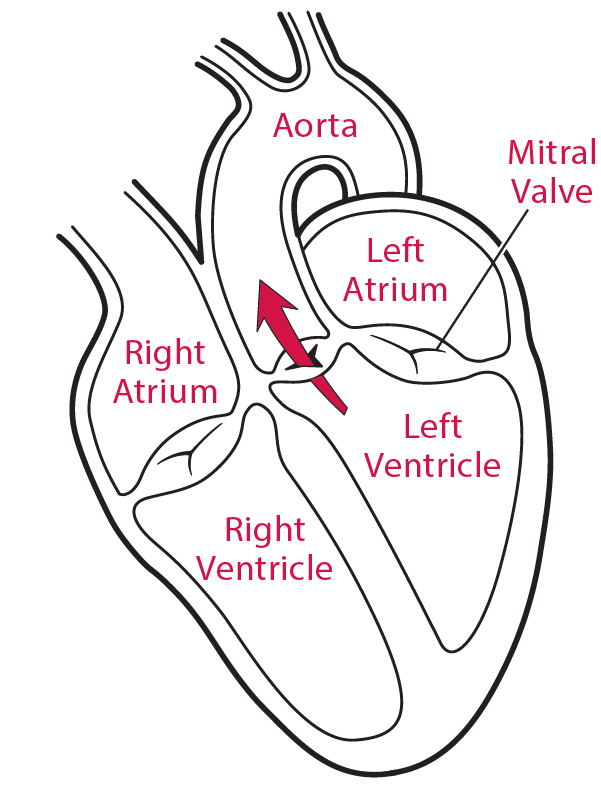Our clients who come to see us at our hospital for small animals often become extremely alarmed if we say their dog has heart failure. They think the word “failure” means the heart has stopped working and they have to put down their dog. Not so. Heart failure, known medically as congestive heart failure, means there’s fluid in the lungs because the heart is having a prob-
lem pumping.
There are medications that can extend life and even the quality of life. It can be hard to tell if the extra time is going to be three months or three years, but with good care, a dog can go on for a long time.
The vet might say your dog has left-sided heart failure or right-sided. What does that mean? It has to do with which heart valve is malfunctioning. In dogs, heart disease is not about clogged arteries but almost always about a faulty, gradually deteriorating valve that doesn’t open and close as it should and therefore doesn’t allow blood to flow in the right direction.
Left-sided congestive heart failure
If you are told your dog’s heart failure is on the left side of her heart, it means there is something wrong with the mitral valve. (This is the valve that most often becomes diseased in dogs.) The mitral valve separates the two chambers on the left side of the heart — the left atrium and the left ventricle. When blood comes from the lungs with a new supply of oxygen after the dog has taken a breath, that blood goes first to the left atrium and then to the left ventricle. From there, the blood is pushed out to all the tissues of the body with each heartbeat. (A heartbeat means the heart — a muscle — is contracting to propel the oxygen-rich blood forward.)
But if the valve doesn’t close as tightly as it should after each beat due to the fact that the leaflets that open and close it have deteriorated by way of irregular thickening and shortening, blood will leak backwards from the left ventricle to the left atrium. High pressure in the heart’s left atrium will then back up into the lungs. That in turn causes fluid to leak out of the blood vessels there and into the air spaces around the lungs. It’s called pulmonary edema (“pulmonary” refers to the lungs and “edema” means an excess of fluid trapped in bodily tissue), and it results in difficulty breathing.
Signs of left-sided congestive heart failure include the following:
- Coughing (often during the night)
- Fainting or collapse
- Becoming winded more easily
- Increased panting and exhaustion when the dog exerts herself. (If the situation becomes severe enough, breathing will become difficult even at rest. The body is not receiving enough oxygen through the lungs.)
Right-sided congestive heart failure
If you are told your dog has heart failure in her heart’s right side, it means the valve between the right atrium and the right ventricle is not working properly. It’s called the tricuspid valve. After blood has circulated through the body to drop off oxygen at all of a dog’s tissues, it travels back to the heart through the right atrium, from there to the right ventricle, and then on to the lungs to pick up more oxygen. But if the tricuspid valve is faulty, blood will leak backwards into the right atrium and away from the lungs so that not enough oxygen gets picked up.
Signs of right-sided congestive heart failure include the following:
- Abdominal abstention
- Difficulty breathing — not from fluid buildup in the lungs but in the chest or abdominal cavity.
Diagnosis and treatment
The vet will know there’s something wrong when he places a stethoscope on different parts of your dog’s chest to evaluate the heart’s different valves (there are actually four altogether) and hears a murmur by the mitral or tricuspid one. That’s the telltale sign that the blood is sloshing around in the wrong direction. Murmurs are graded on a scale from one to six. If it’s a one or a two, you won’t notice any changes in your dog, and the doctor may just tell you to keep an eye on your pet’s behavior. (A one or a two is often picked up on a routine exam.)
Once a murmur hits a grade three or four, you’ll be more likely to notice signs — a persistent cough, respiratory difficulty, and difficulty exercising as vigorously as usual. From there, the vet may advise a chest X-ray and an echocardiogram (an ultrasound of the heart) that gives a picture of the heart pumping blood in real time. These diagnostic tools will also tell if the heart is enlarged — a response to the extra exertion necessary for the heart muscle to try to keep the blood flowing in the right direction despite the faulty valve. (This is why an enlarged heart is not a good thing.)
While treatment for a faulty heart valve in a person usually results in valve replacement surgery, that’s still very rare for dogs (and super expensive as it becomes available). Medical attention is more about extending life and the quality of life rather than an actual cure. For either left- or right-sided congestive heart failure, drugs will be prescribed to get excess fluid out of circulation as well as to dilate the blood vessels in order to give the heart a break when it comes to how vigorously it has to pump. There are also drugs that improve the heart’s pumping action.
Additionally, your dog may be prescribed a low-sodium diet, again whether the heart failure is on the left or the right side. Sodium allows the body to retain water, and the last thing you want when a dog has gradually worsening heart failure is excess fluid.
Furthermore, your pet’s physical activity may need to be curtailed to some degree, and you may be advised not to pick her up from underneath the chest, as that will push an enlarged heart upward, putting more pressure on the airways.
Such changes to accommodate a dog who has a progressive disease can understandably leave you worried. But with the right drugs and the right lifestyle measures in place, there’s a good chance you will have your pet for quite a while from the time a murmur is first detected. In fact, many dogs live with congestive heart failure for several years and eventually die from something else altogether.





